When the Windows desktop background goes black, it is often due to a corrupted Slui.exe file, which is responsible for monitoring the activation status of Windows. When this file gets corrupted, it can tell the Windows that you don’t have activated Windows. Since the Personalization feature is for activated Windows users, your Windows desktop background goes black when Slui.exe thinks you have a non-activated version of Windows.
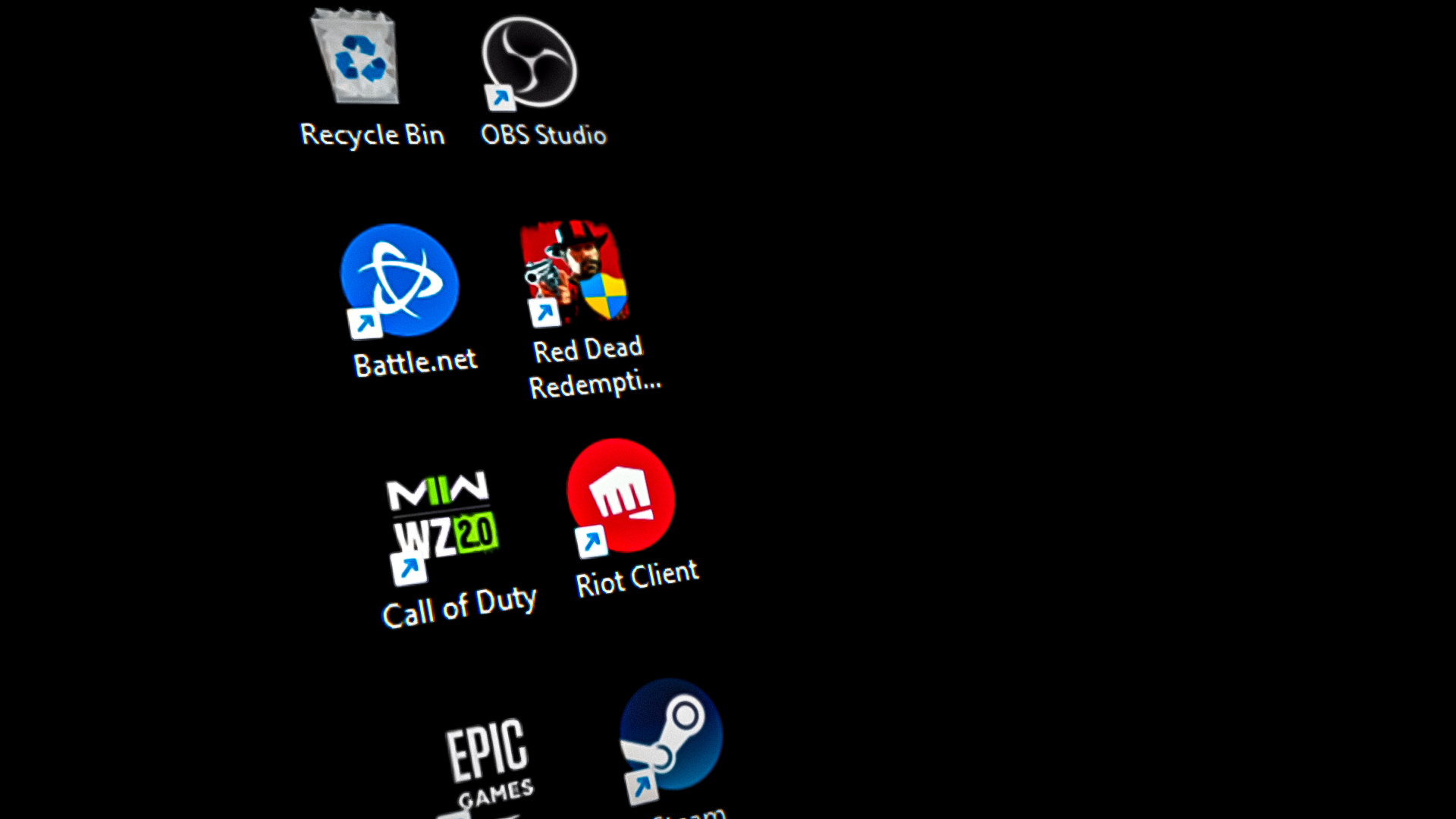
Regardless of having activated Windows, you can also encounter this issue due to the corrupted transcoded wallpaper file, incorrect wallpaper personalization settings, and misconfigured wallpaper location in the registry editor.
1. Change desktop background from Solid to Picture
If your background is set to Solid color, your desktop wallpaper will display a black background by default. Therefore, before you try all the other methods, we recommend you check your wallpaper settings.
- To do so, right-click the desktop and select Personalize from the options.
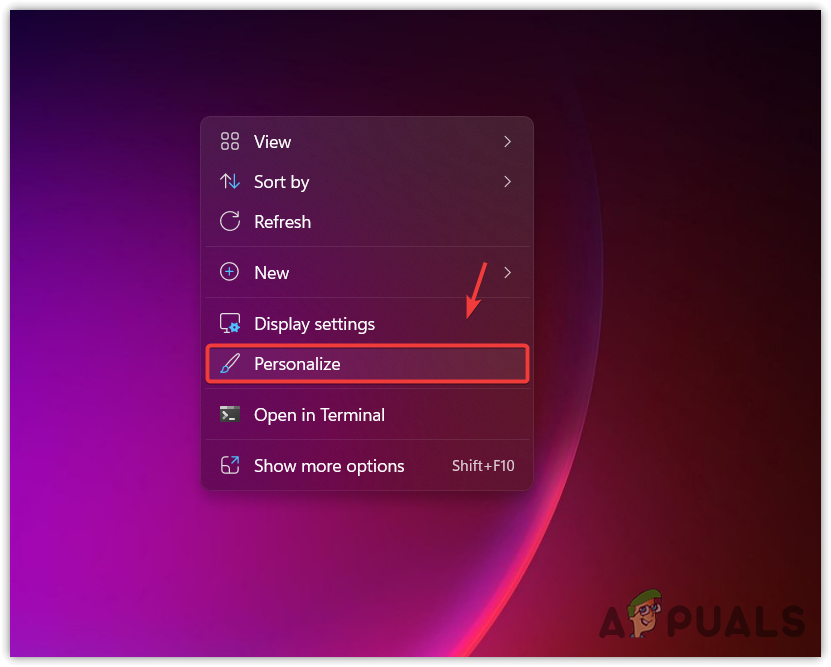
Opening Personalization Settings on Windows - Go to the Background settings and change the Personalize your background settings from Solid color to Picture.
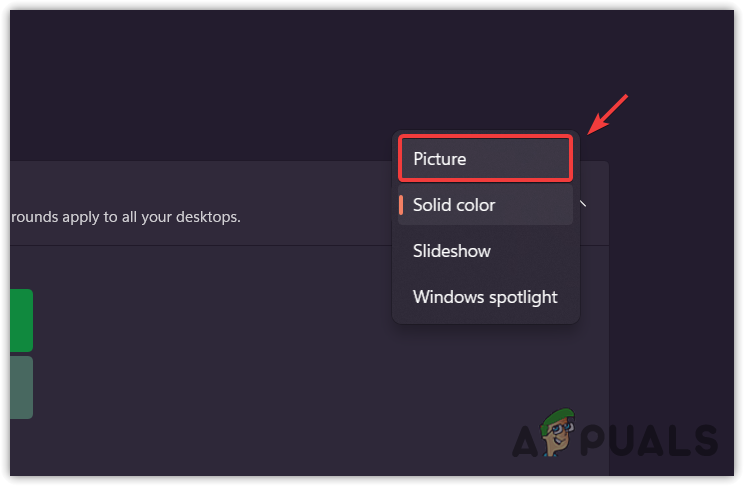
Changing Background from Solid to Picture - Once done, your black desktop background problem should be fixed.
2. Restore Slui.exe file
Slui.exe is a Licensing User Interface that runs in the background to keep tracking the operating system activation status. However, if this file gets corrupted by the malware, your Windows could think that you haven’t activated Windows, which restricts the Personalization feature, resulting in the black desktop wallpaper.
Hence, you will have to delete the slui.exe file and then try changing the wallpaper to your favorite one.
Slui.exe is not a necessary process, so don’t worry about deleting the Slui.exe file because it can be restored by running the System File Checker.
- Open the File Explorer and go to the following directory. To navigate fast, you can paste the following path to the address bar.
C:\Windows\System32
- Local Slui.exe file and right-click on it, then go to Properties.
Before deleting the Slui.exe, you need to take permission from the TrustedInstaller. Otherwise, you will get this ” You require permission from TrustedInstaller to make changes to this file.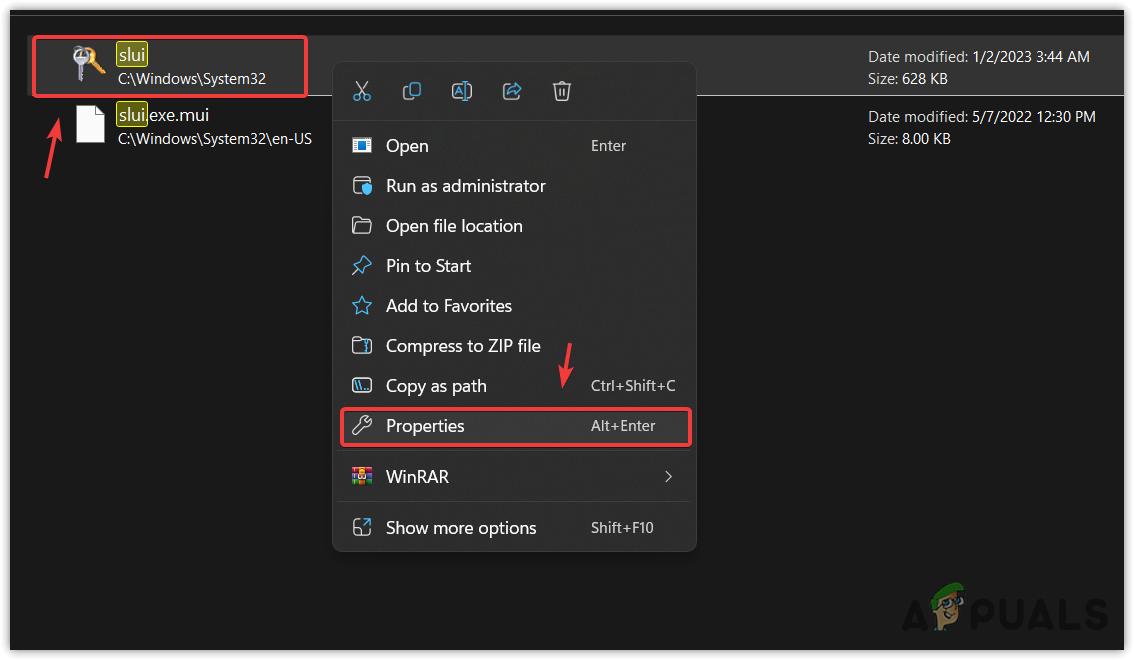
Opening Slui file Properties - Then, go to Security from the top.
- Click Advanced and then click Change.
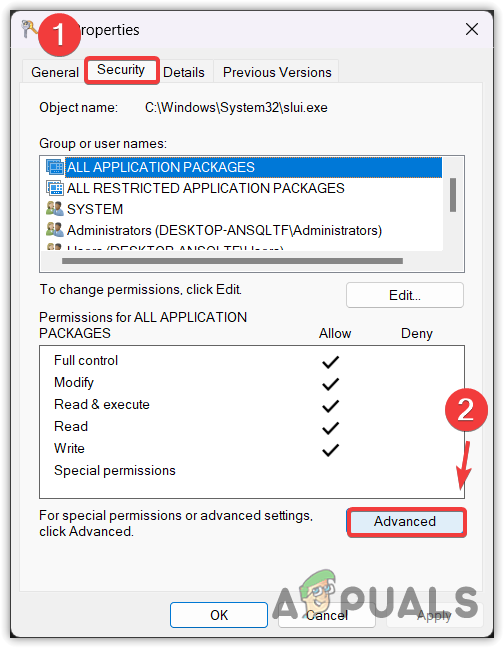
Opening Advanced Security Settings - Here enter your account username and then click Check Names. If it can’t find the name, then click Advanced, then click Find Now.
- Under Search results, find your account and select it, then click OK.
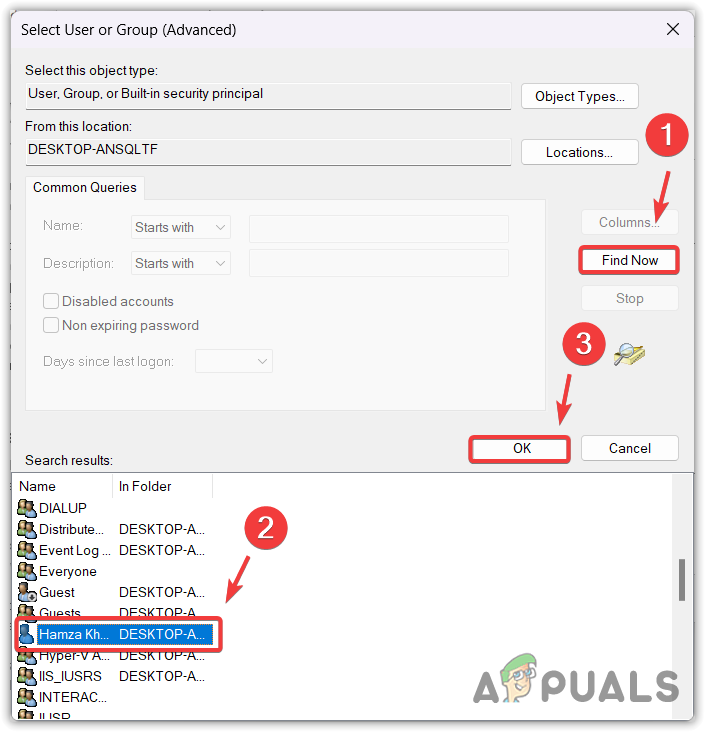
Selecting User Account - Again, click OK to select the user name.
- After, click Apply and click OK.
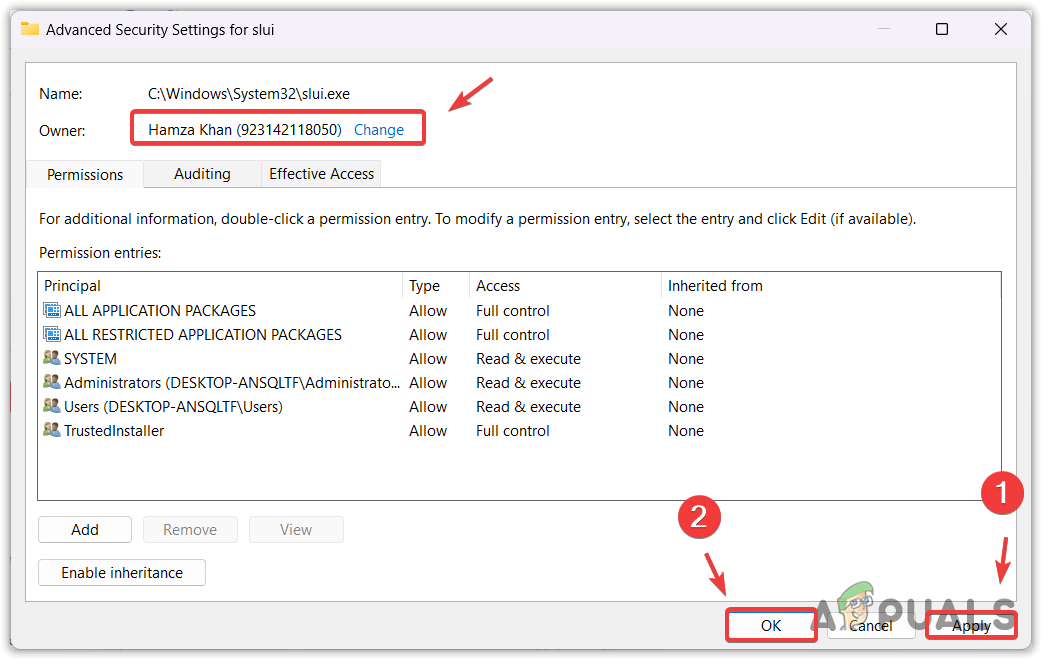
Adding a user name to the file security settings - Now you can be able to change the permissions of the Slui.exe file.
- Under Group or user names, select ALL APPLICATION PACKAGES and click Edit.
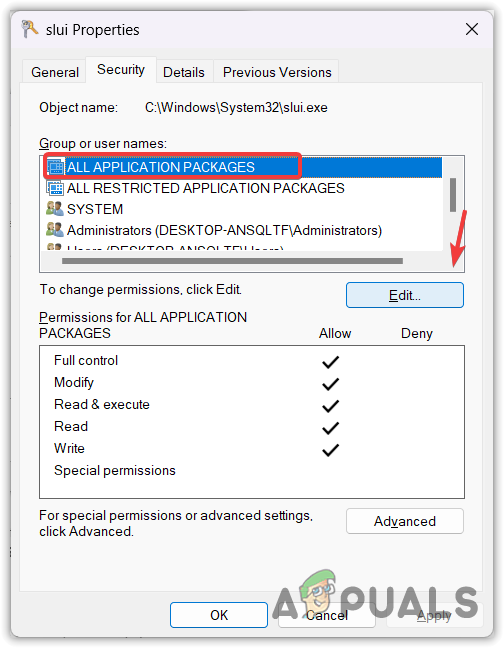
Editing the Permissions of a user name - Tick the Full Control option and click Apply.
- Repeat these steps with other Groups or user names.
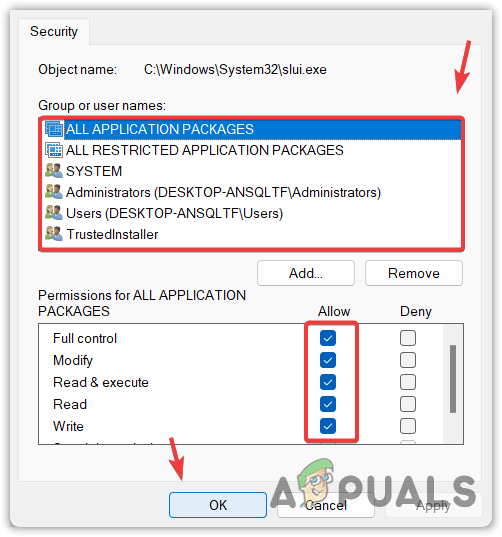
Ensuring that the user has all permissions over a file - Once done, click OK to close the Window.
- Delete the Slui.exe file, then close the Window. The next step is to change the Wallpaper.
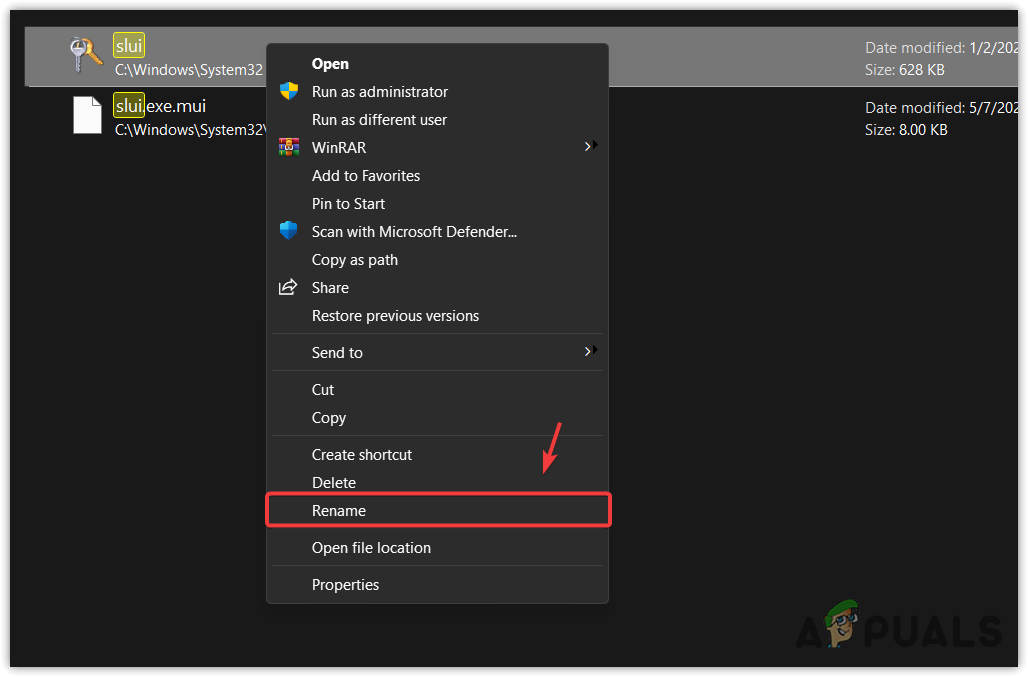
Deleting the Slui exe file from the system 32 folder - Once done, right-click the wallpaper and select Set as desktop background or right-click the desktop and go to Personalize.
- Select the wallpaper and check if the Black desktop background issue is fixed.
3. Recreate the Transcoded Wallpaper File
Your wallpaper loads from the registry file, and then it sends to the transcoded file, which stores a wallpaper as a transcoded image to create a cache file for Windows. So Windows can load the wallpaper directly from the cache, which makes the process fast. Hence, delete transcoded file along with the cache wallpaper to create a transcoded file by following the steps.
To recreate a transcoded file:
- Press the Windows + R keys at the same time to open Run Window.
- Enter the following directory in the search box and click OK.
%USERPROFILE%\AppData\Roaming\Microsoft\Windows\Themes\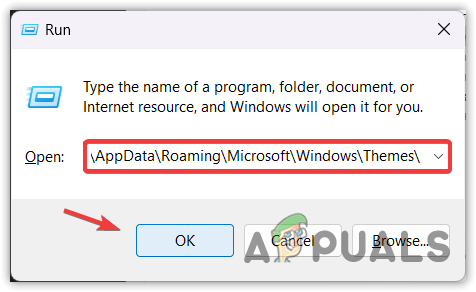
Navigating to the desktop background wallpaper folder - Here Delete the TranscodedWallpaper file and navigate to the CacheFiles folder.
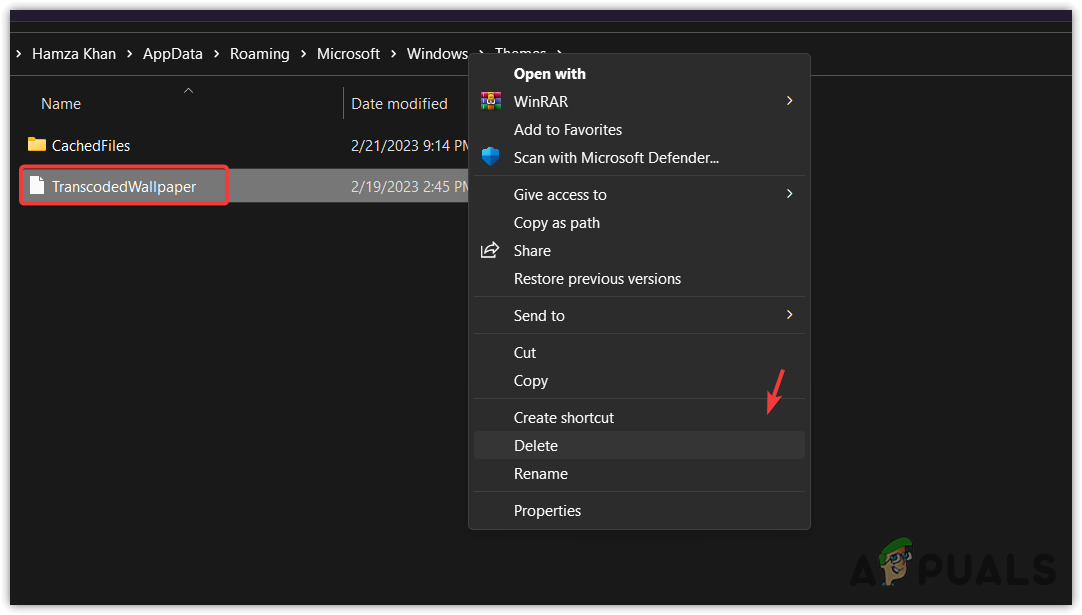
Deleting Transcoded Wallaper File - Delete the Black screen wallpaper from the folder.
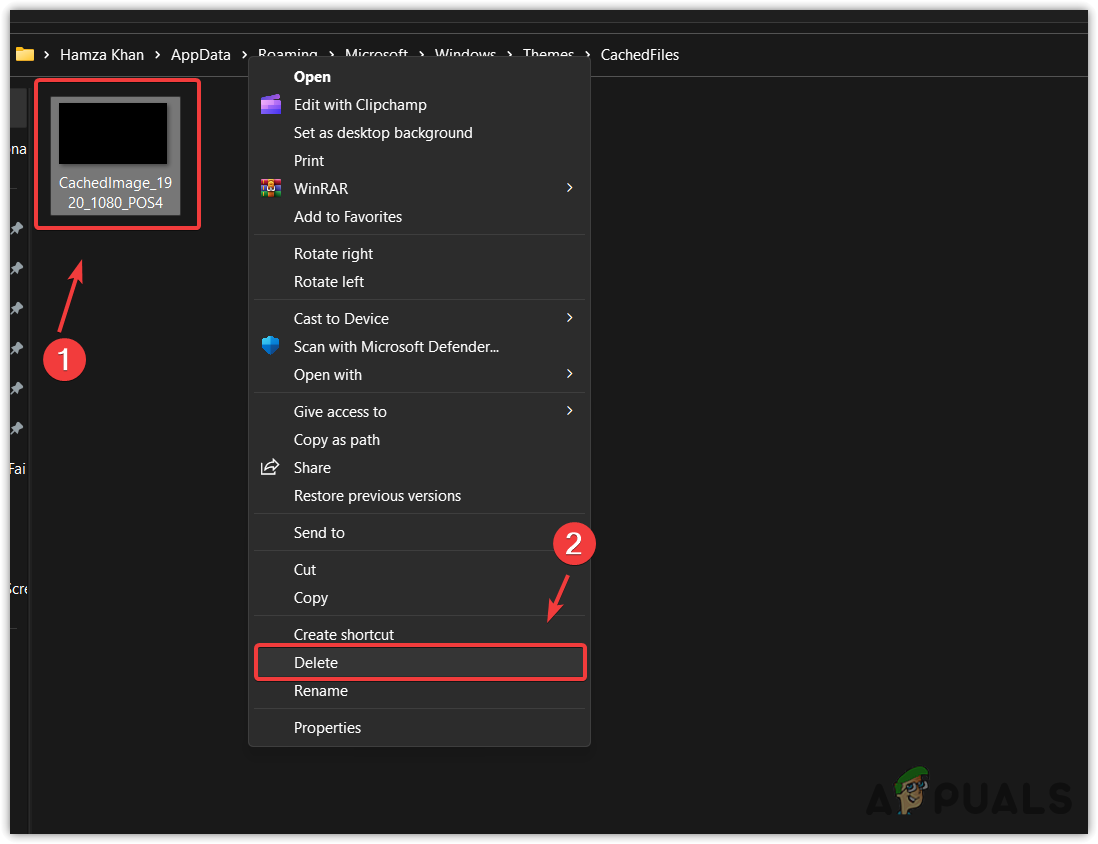
Deleting the Black Desktop Background Wallpaper file - Once done, right-click the taskbar and select Task Manager.
- Once it is opened, right-click Windows Explorer and select Restart.
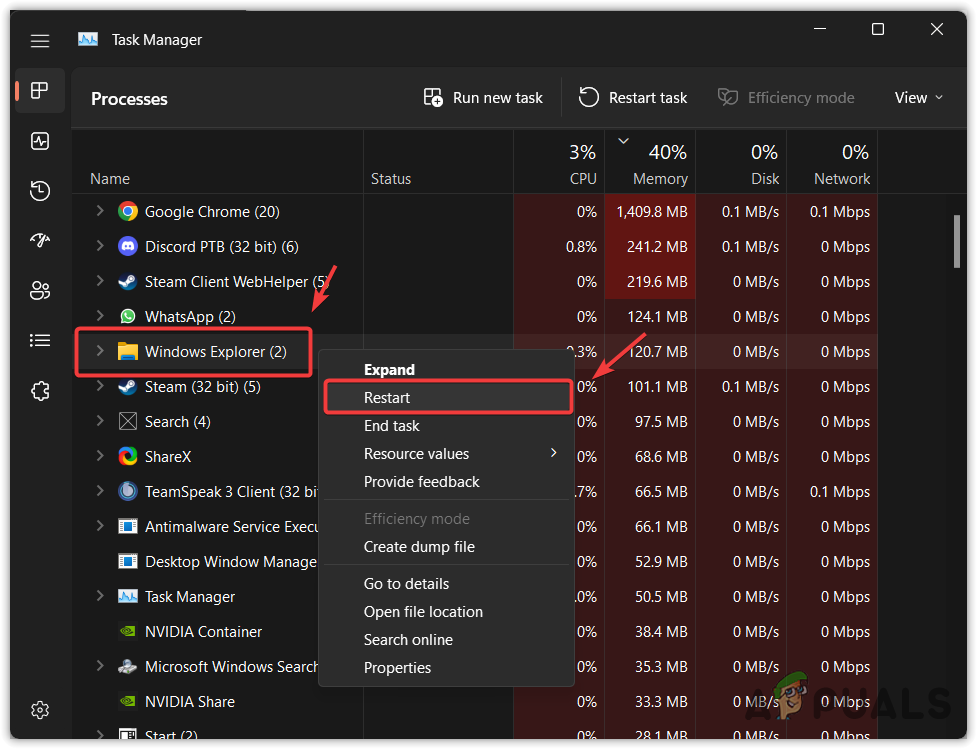
Restarting Windows Explorer - Once done, check if your problem is fixed.
4. Configure Wallpaper Registry File
Windows takes the wallpaper location from the registry first unless it is a default Windows wallpaper. Hence, if your wallpaper location has been changed or it is incorrect from the registry editor, you will encounter this issue. Therefore, configure the wallpaper registry file by following the steps.
- Press the Windows key and search for Registry Editor.
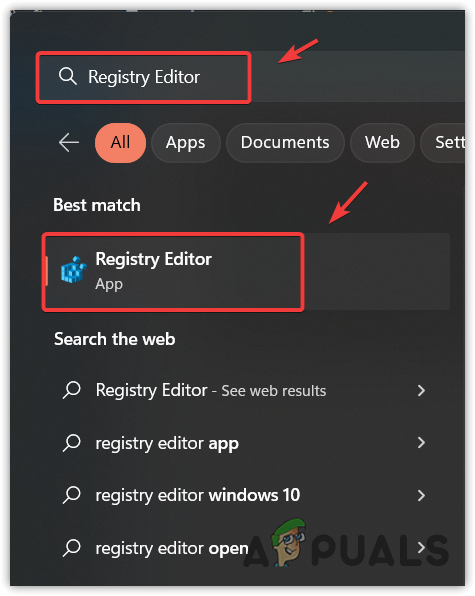
Opening Registry Editor from Start Menu - Open the registry editor and go to the following destination.
Computer\HKEY_CURRENT_USER\Control Panel\Desktop
- Double-click the Wallpaper file from the right pane.
- Here make sure that the wallpaper path is correct. If it’s not, then open File Explorer and navigate to the wallpaper location.
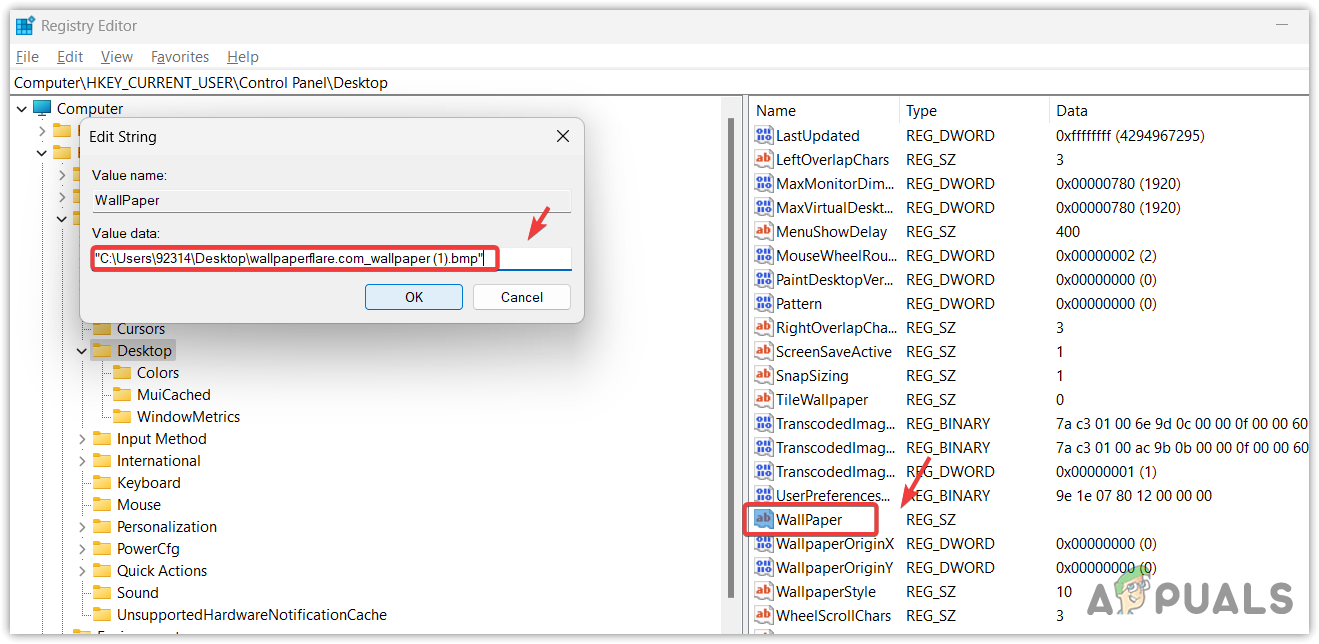
Ensuring the wallpaper path is correct in the registry editor - Right-click the wallpaper and select Copy as path option.
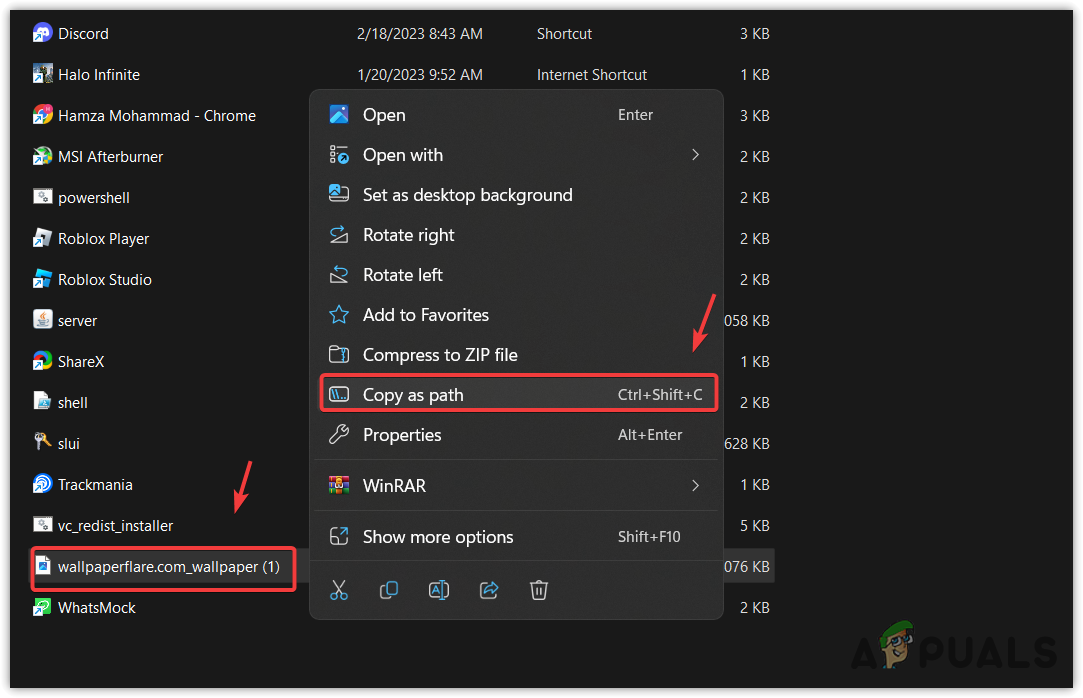
Copying Wallpaper path - Once done, paste the wallpaper path as Value data into the registry wallpaper file.
- Once done, click OK and then close the registry editor.
- Right-click the taskbar and select Task Manager to open it.
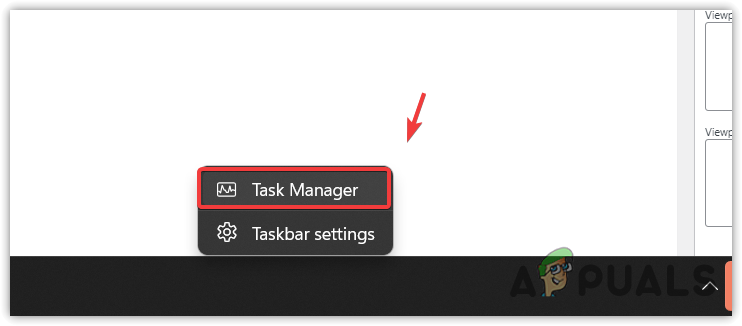
Opening Task Manager - Now right-click Windows Explorer and select Restart for the registry changes to take effect.
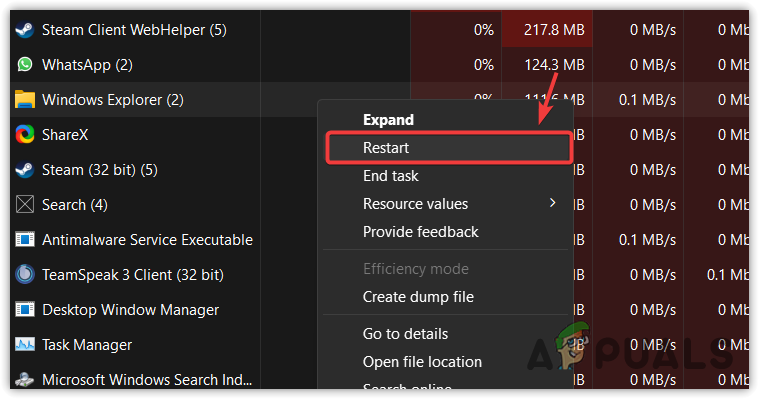
Restarting Windows Explorer from the task manager - Once done, your issue should be fixed.
- Change the Wallpaper Manually.
5. Convert Desktop Wallpaper into BMP format
The JPG format images use graphics adapters to display wallpaper on the desktop. Meanwhile, the Bitmap Image file (BMP) does not require any graphics adapter. Hence, if you have a very old graphics card or using a very low iGPU, changing the wallpaper format to BMP can fix the black desktop background issue.
To change the format:
- Press the Windows key and type Paint.
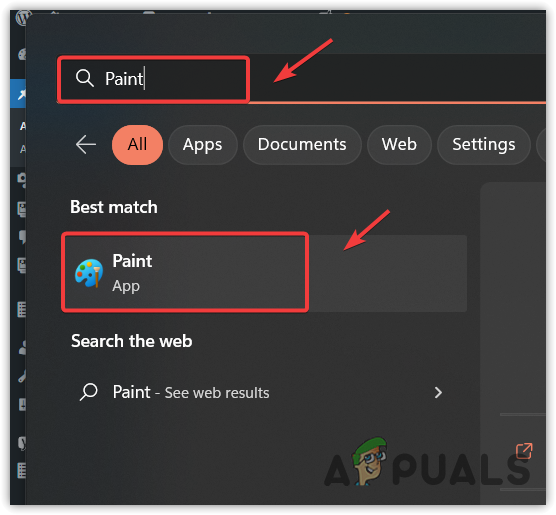
Opening Paint application - Open the pain application, click File > Open, or press Ctrl + O to browse the wallpaper.
- Select the wallpaper file and click Open.
- Once done, again click File and hover Save as and then click BMP Picture.
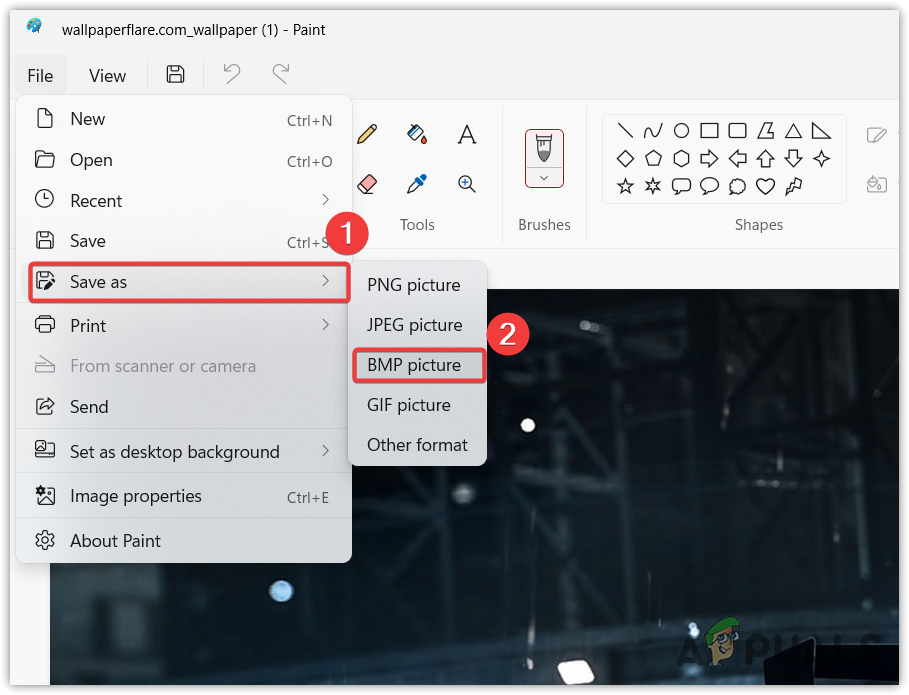
Saving a Wallapaper in a BMP format - Once done, close the paint application, and navigate to the location where you save the BMP wallpaper.
- Right-click the BMP wallpaper and select Set as desktop background.
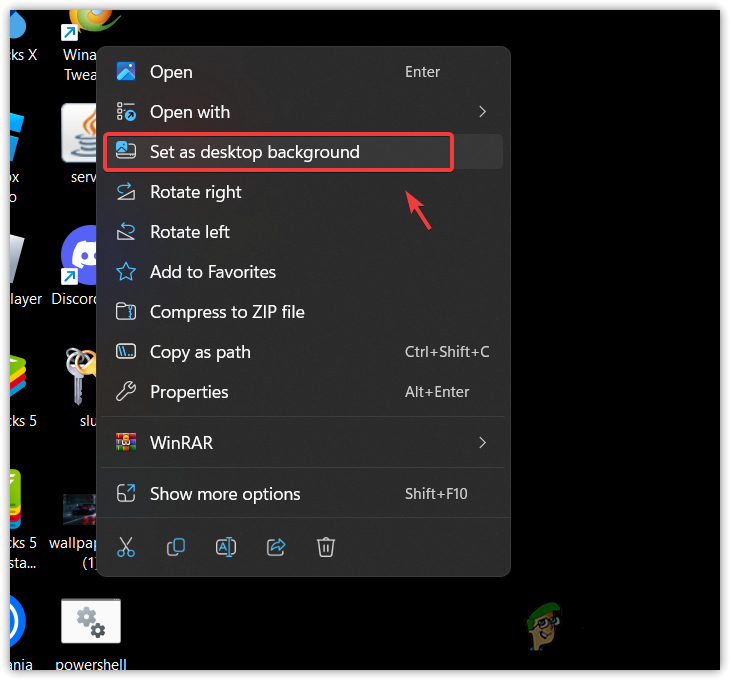
Setting an image as a wallpaper on Windows - Once done, your black desktop background should disappear.
6. Change your Desktop Wallpaper manually
If you have not tried changing your desktop wallpaper manually yet, do it because it will create a new transcoded wallpaper file with a wallpaper cache. As a result, if the transcoded wallpaper file or a cache file is corrupted, your black screen wallpaper issue will fix after changing the wallpaper manually.
- To do so, right-click the desktop and go to Personalize.
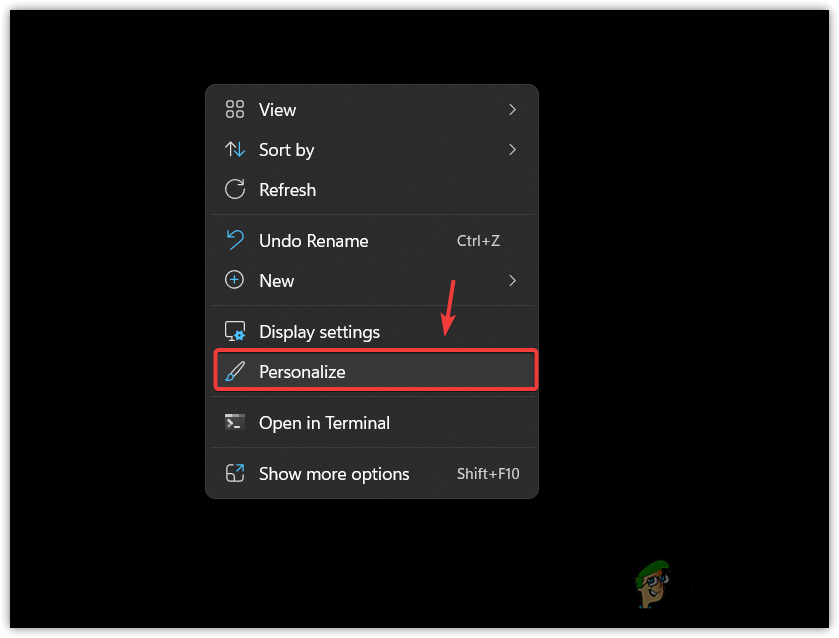
Opening Personalizing Settings - Navigate to Background and select the wallpaper you want to set.

Setting wallpaper for the desktop - If you want to set a downloaded image as wallpaper, then right-click the image and select Set as desktop background.
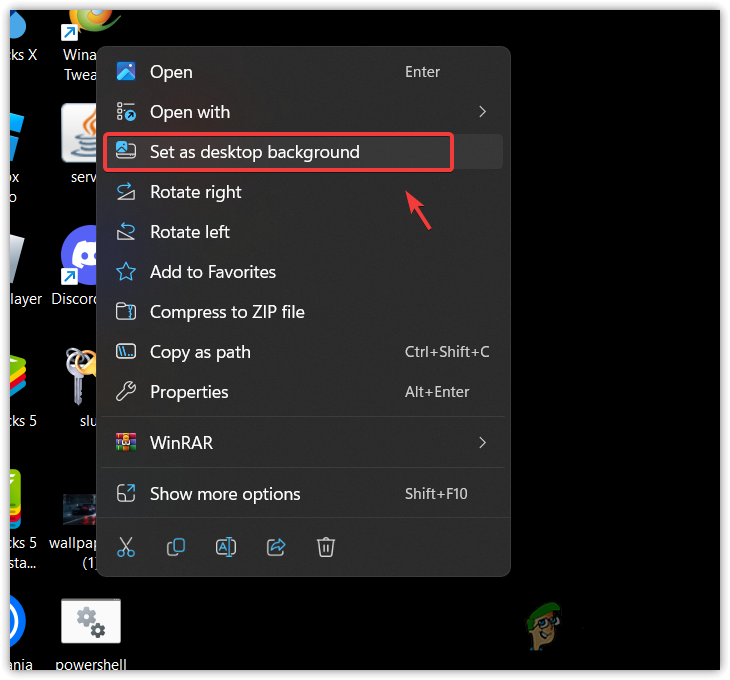
Setting an image as a wallpaper - Once done, check if the problem is fixed.
7. Restart your GPU Driver
The black desktop background issue can also be caused by a GPU driver crash because graphics adapters are used to display JPEG wallpapers. Hence, try restarting the GPU driver, which reloads the driver from the RAM.
To restart the GPU driver, press Win + Shift + Ctrl + B together. If your screen blinks multiple times, it means your GPU driver has been restarted.
8. Ensure you have Read access to the image
In Windows, every file or folder has security that users can use to give permission to the system. If the system does not have Read permission over the wallpaper file, you cannot set it as your desktop wallpaper because Windows cannot read the wallpaper file due to not having appropriate permissions.
To ensure that you have Read access:
- Right-click the image you want to set as wallpaper and go to Properties.
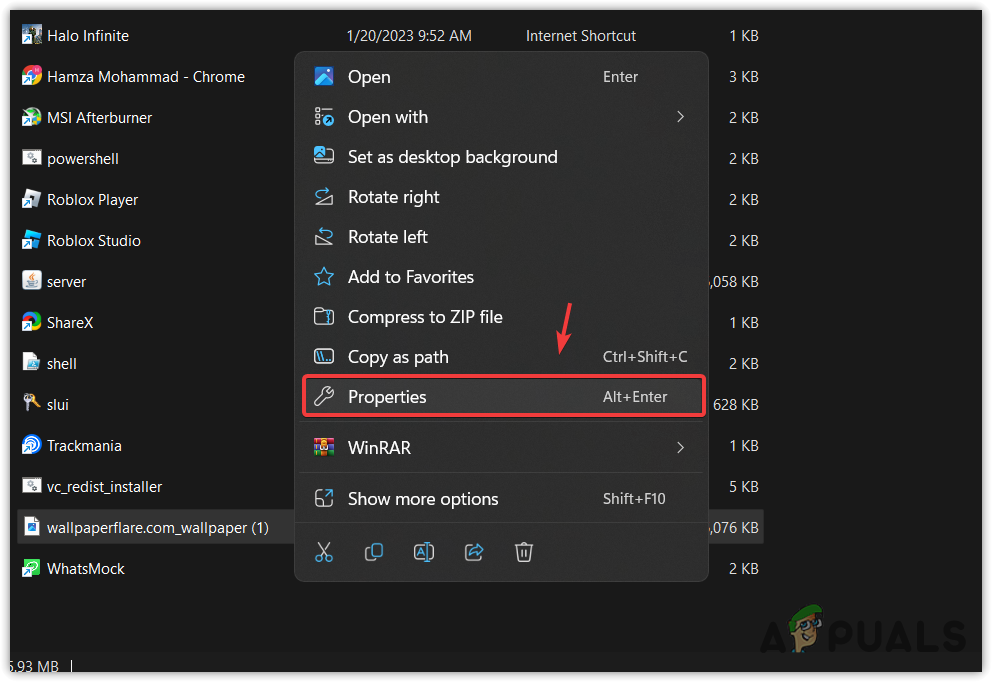
Opening Wallpaper Properties - Go to Security and select the group or user names individually to ensure you have Read access.
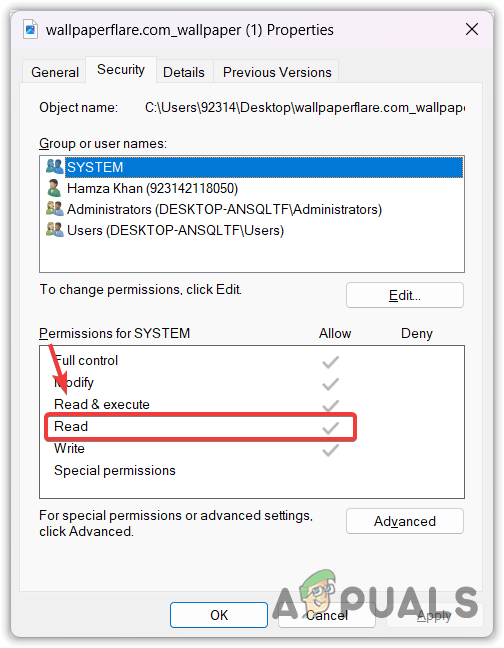
Ensuring that the system has a Read access over wallpaper - If the Deny option is checked for Read permission, click Edit and uncheck Deny box associated with the Read permission.
- Once done, click Apply and click OK.
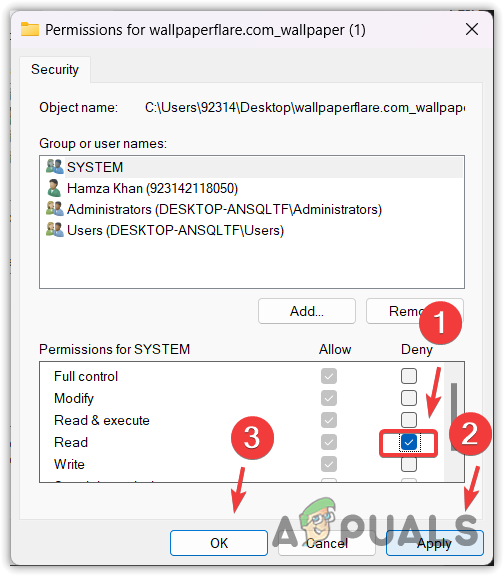
Giving Read access to the Wallpaper file - Now try setting the image as your wallpaper.
9. Perform Clean Boot
Clean boot is a troubleshooting technique that is used to diagnose which third-party program or service is causing the issue. If you use any third-party applications, especially the wallpaper application, it is possible that third-party programs have made changes to the registry file, Group Policy Editor, and the transcoded wallpaper file, resulting in a black desktop background issue.
Therefore, try performing a clean boot to disable the third-party programs and services that load at the startup.
To perform a clean boot:
- Open the Run Program by pressing Win + R on the keyboard.
- Enter msconfig in the input box and click OK to open the system configuration Window.
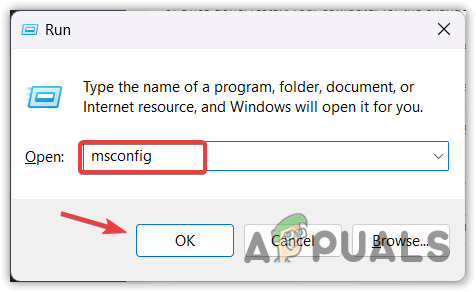
Opening System Configuration Window - Choose the Selective startup and go to the Services tab from the top.
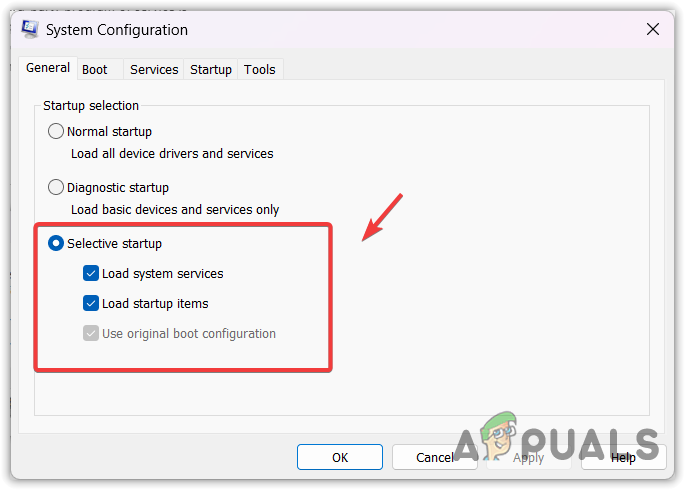
Selecting Selective Startup - Tick Hide all Microsoft services and click Disable All.
- Click Apply and click OK.
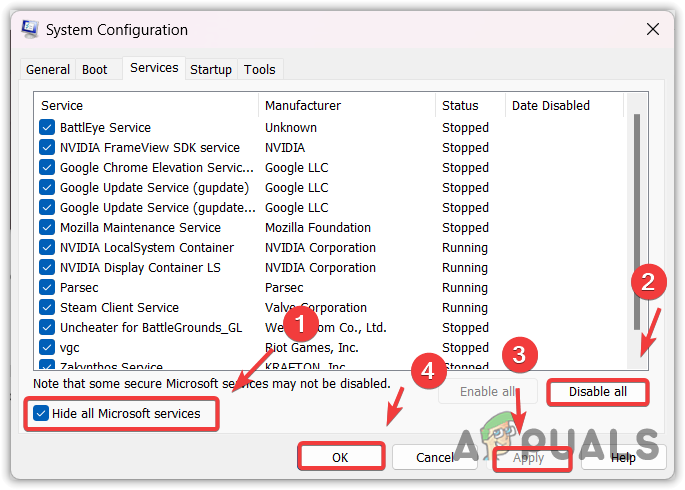
Performing a clean boot - Once done, go to the Startup tab from the top.
- Click Open Task Manager.
- Here right-click the third-party programs one by one and click Disable.
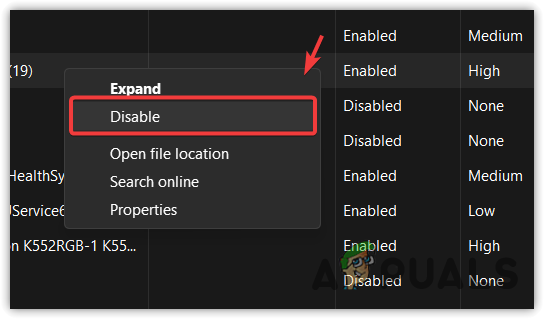
Disabling Irrelevant applications at startup - Once done, restart your computer for the changes to take effect and check if the problem is resolved.
Windows Black Desktop Background - FAQs
To fix this issue, open the personalization settings and change the background from Solid to Picture. If the issue persists, try deleting the Slui.exe file, which might get corrupted, which is why you are facing this issue.
Mainly, this issue occurs due to a corrupted Slui.exe file, which is located in the system32 folder on Windows. The Slui.exe file is responsible for monitoring the activation status of Windows. If this file gets corrupted, the personalization feature will be restricted to you, which is why you are getting this issue.
The post (9 Fixes) Windows Wallpaper Suddenly Turned Black appeared first on Appuals.com.


0 Commentaires